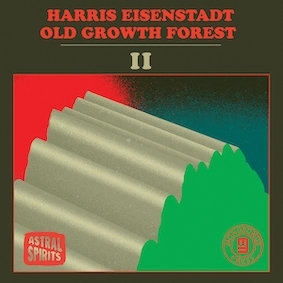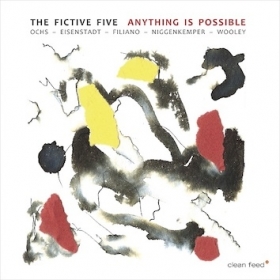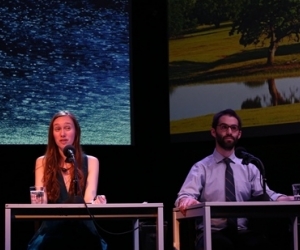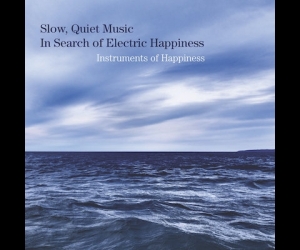Creative and cooperative (or should we just say, Canadian?), Toronto-born, Brooklyn-based drummer Harris Eisenstadt has, for the past fifteen years, attracted attention as a sophisticated bandleader and band member. On his latest recording, the disciplined Old Growth Forest II, Eisenstadt’s balanced compositions utilize a quartet’s strong points. Another recent release, Anything is Possible, which is attuned to improvisations from a quintet that features two double basses, stretches compositions by saxophonist Larry Ochs to the limits and beyond, with Eisenstadt’s patterns strengthening the free-flowing expositions with just the right amount of force.
The ambulatory pace of the quartet album is pushed ahead by bassist Jason Roebke’s steady plucking, along with some detours into below-the-bridge slaps, while the gruff tones of Jeb Bishop’s trombone and emotional smears from Tony Malaby’s saxophones harmonize or engage in call-and-response. These slinky modulations are particularly noticeable on “Song with Owen” and in the horn faceoff of “Rustling,” in which Malaby’s ragged tenor bites and Bishop’s instrument vibrates while Eisenstadt’s drumrolls subtly accelerate the funky tempo. “Standing Snaps,” the album's one extended drum intermezzo, expresses the same feeling with measured and restrained pops and pumps, ushering in the equivalent of a New Orleans-like second line, which is subsequently taken up by soprano saxophone trills, tailgate trombone burrs, and slapped bass lines. Canny texture dislocation is a feature of “Needles/Seedlings,” the CD’s introductory composition. Parade-ground press rolls and nerve beats propel the chromatic melody, which is decorated along the way with jagged altissimo cries from Malaby and stretched brass slurs, until climaxing during a slow exit.
On the quintet album, bassists Pascal Niggenkemper and Ken Filiano push, probe, and pluck alongside Ochs' raucous tenor and sopranino saxophone lines, Nate Wooley’s trumpet-squeals, and Eisenstadt’s sly patterning. The drummer’s skill is put to its best use on “The Other Dream” and “A Fictive Form of Closure.” The former is a sizzling polyphonic showcase where crying tones from the top of the sopranino’s range and explosive half-valve effects from Wooley escalate into an exercise in glossolalia and renal groans that judder up and down the scale; the piece avoids cacophony, attaining hushed harmony by way of bass-string rubs and Eisenstadt's corralling drum rim shots and pops. On the latter track, horizontal cymbal scrapes and bell-like peals combine to toughen the theme, as strained trumpet ripostes to Ochs’ flutter-tongued exposition are underscored by bass-string thrusts.
Eisenstadt’s mid-sequence pumps and tick-tock patterning help expose the melody created on “With Liberties and Latitude for All.” Initially using hand slaps to emphasize the track’s moderate theme among timbres from tough reed overblowing, spiccato bass slices, and trumpet-note squirts, the drummer’s subsequent power-thumps help focus the others to adhere to the tune’s sinewy outline.
Although only one of these albums is entitled Anything is Possible, both express Eisenstadt’s commanding presence.




